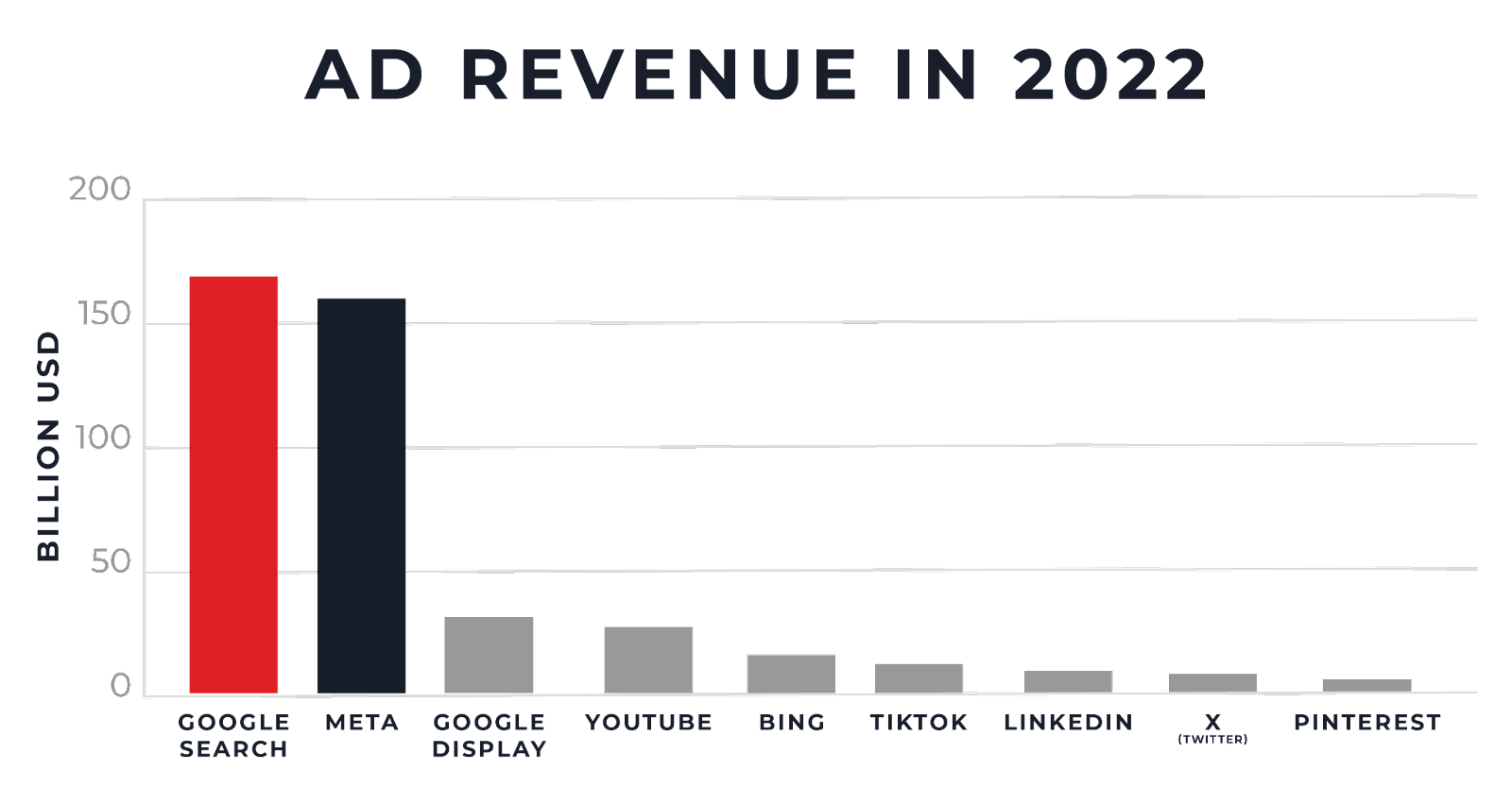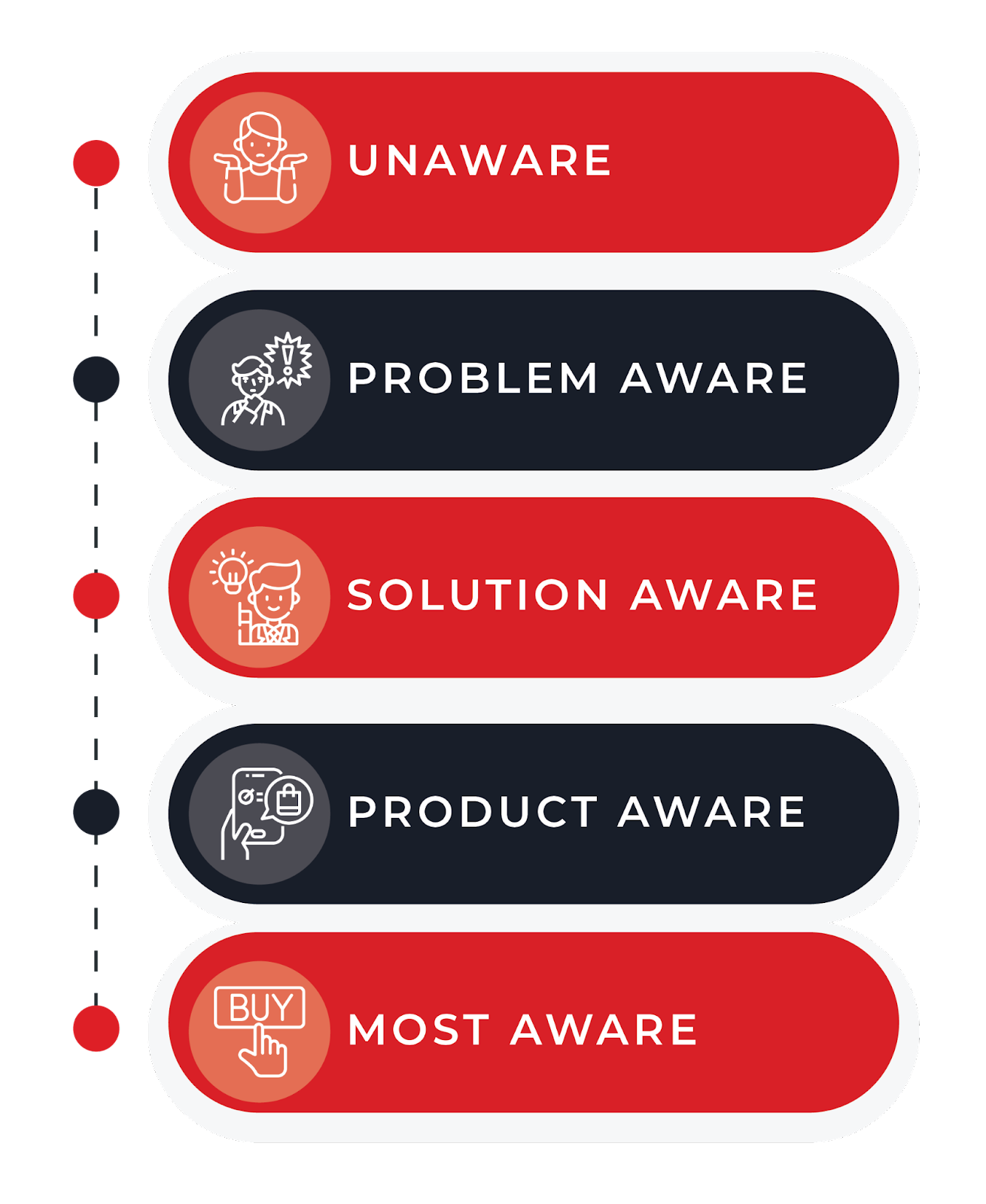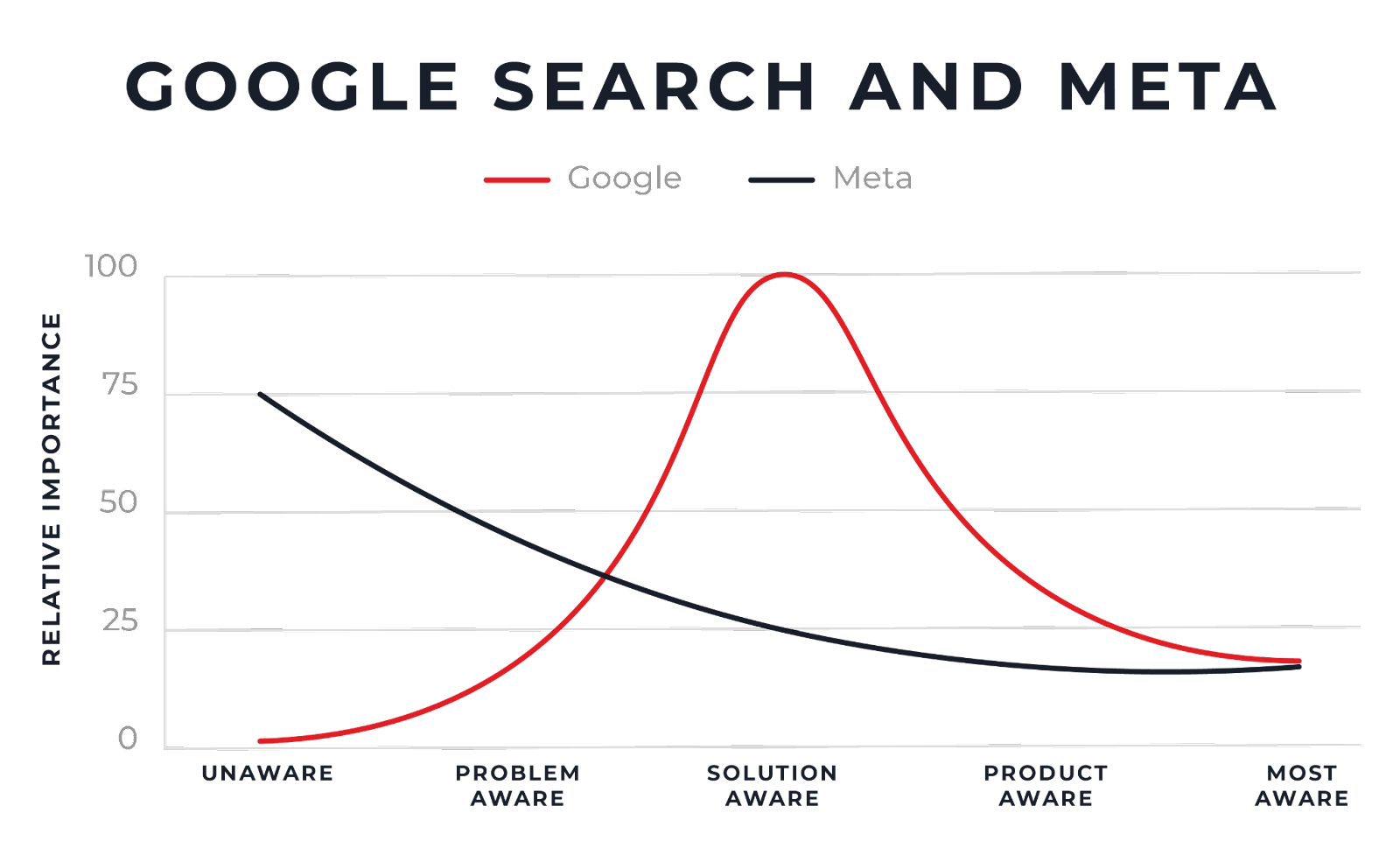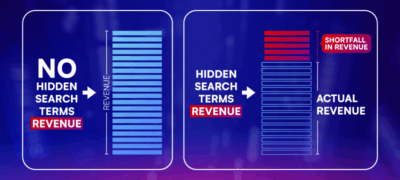
How Meta & Google Complement Each Other
Learn how Google & Meta Ads work synergistically to complete the buyer's journey.
Meta and Google Search are undoubtedly the two titans of paid digital marketing platforms.

Luckily for advertisers, these two main platforms work synergistically to push potential customers down the buyer’s journey. Let’s see how they do it!
Understanding The Buyer’s Journey

Almost all marketers today are familiar with the stages of the buyer’s journey above, as outlined by Eugene Schwartz in 1966. However, fewer marketers truly understand how these stages correspond directly to Google and Meta. Let’s check out how Google Search would play out at each stage:
Unaware – Not searching because they don’t know they have a problem
Problem Aware – They often use queries that include “why”, ”how”, and “what” as they’re seeking information about their problem
Solution Aware – They know the general solution, but they aren’t sure of the specific product they need yet. This is where Google Search really shines and this is the bulk of Nonbrand traffic. Searches include “best”, “cheapest”, “top-rated”, and specific attributes related to what they desire in their solution
Product Aware – They’re familiar with your product as well as competitors’ products. Searches may include “[your company] vs [competitor]” or “[your company] reviews” or “[one of your products] price”. This is kind of a transition between branded and nonbrand.
Most Aware – They know exactly what they need and will often search just for the brand name. Cut and dry branded search
Here’s an example:
Unaware – Not searching because they don’t know they have a problem
Problem Aware – “Why is my skin dry?”
Solution Aware – “Best facial moisturizer”
Product Aware – “Taikun facial moisturizer reviews”
Most Aware – “Taikun” (imagining us as a fictitious provider of skincare products)
Here’s another:
Unaware – Not searching because they don’t know they have a problem
Problem Aware – “How can I learn to dance?”
Solution Aware – “Top local dance schools”
Product Aware – “Taikun salsa classes vs Brian Lackey belly dancing classes”
Most Aware – “Taikun” (imagining Collin as a salsa dancing expert)
On Google, each stage will likely correspond to a different, separate ad because:
1. Their search indicates their stage in the buyer’s journey
2. Google Search ads have a super low character count, so you can’t educate and guide them through the process with the ad itself
Meta works quite differently. Here’s how it looks in terms of the stages:
Unaware – Huge potential as you get in front of people without them actively seeking information
Problem Aware – They may have an idea of a problem and are open to seeing potential solutions in their feeds
Solution Aware – They know they need a particular solution and have been seeing a few brands that could solve their problem
Product Aware – They’ve narrowed down their search to a few products from a few brands. Need a final push
Most Aware – They know your brand and are mostly used for re-engagement, promos
Meta is different in that the ads can contain a lot of copy and the creatives themselves can pull a lot of weight in terms of guiding and educating prospects. On Meta, one ad may serve to guide people based on just one or many stages of the buyer’s journey. It’s typically efficient to cover information for multiple stages because people from various parts of the journey will all interact with the same ad.
Here’s an example
Unaware – Scrolling and see an ad that mentions symptoms of dry skin which they now realize that they have
Problem Aware – That same ad also explains how moisturizers keep in water to avoid those symptoms
Solution Aware – That same ad makes a case for why its line of products is the best option based on XYZ
Product Aware – That ad pushes one or a few specific products
Most Aware – This would likely be a different ad that’s focused on retargeting for more sales from the customer base
And another one:
Unaware – Scrolling and see an ad that features a video of dancing that piqued their interest
Problem Aware – Text overlays explain the physical and mental benefits of dance
Solution Aware – The copy talks about why salsa dancing is particularly beneficial
Product Aware – The end of the copy and the headline are calling on people to try their specific salsa dance lessons because of XYZ
Most Aware – This would likely be a different ad that’s focused on retargeting for driving engagement from their customer base
The two examples we gave were targeting people as far back as the Unaware phase and trying to push everyone along as far as possible.
Sometimes it makes sense to, especially if you can target more accurately, skip one or more phases. If you can target people interested in dance, you can go straight to the Solution Aware phase, as a super simple example.
Meta’s primary focus is finding people in the wild and pushing them as far down the buyer’s journey as possible. Ideally, you’ll get a click and can retarget them with messaging that’s focused further down the funnel as you know you don’t have to start at the Unaware phase all over again with them.
Bringing It Together
Google’s main strength is being at the center of people’s decision-making process when considering different solutions. The demand is already there and only needs to be captured.
Google’s main weakness is not being able to actually generate demand in the same way that Meta can.
Meta’s main strength is being able to establish contact with people who would otherwise never know about your business and educating them to move them efficiently through multiple stages of the buyer’s journey.
Meta’s main weakness is not being able to effectively target people in the crucial Solution Aware phase who are looking to take action at a specific moment. If they reach the point of wanting to acquire the solution right then, they’re going to search for what they want – not aggressively scroll until they find the perfect Reel that compels them to buy.
Here’s a graph that illustrates the relative importance of each platform at different stages of the buyer’s journey. Please note that the graph below shows the relative importance of each platform at different stages of the buyer’s journey which doesn’t necessarily correspond to recommended ad spend allocation.

In Conclusion
It’s crucial to be cognizant of where prospects are at regarding the buyer’s journey to tailor your messaging accordingly. This not only applies to Google vs Meta, but also to specific ads to specific audiences on each platform.
This consideration should work in tandem with your brand’s positioning strategy to be the foundation for planning your messaging/ad copy/creative strategy.
Related Articles

- PPC
The High Cost of Hidden Search Terms: How Google Skims Profit from Advertisers
Google claims that search terms are hidden for privacy reasons and not performance reasons, so we wanted to find out: Do…

- Paid Social
Found a Winning Ad? Here’s How to Iterate on It Properly
Let’s say you’ve finally cracked it. You launched a new concept, and it’s outperforming everything else in your account. ROAS is…

- Paid Social
5 Learnings From Auditing Dozens of Meta Ad Accounts
At Taikun, we’ve audited dozens of Meta ad accounts in the past few months. The brands varied, but the patterns were…
How can we help you grow?



